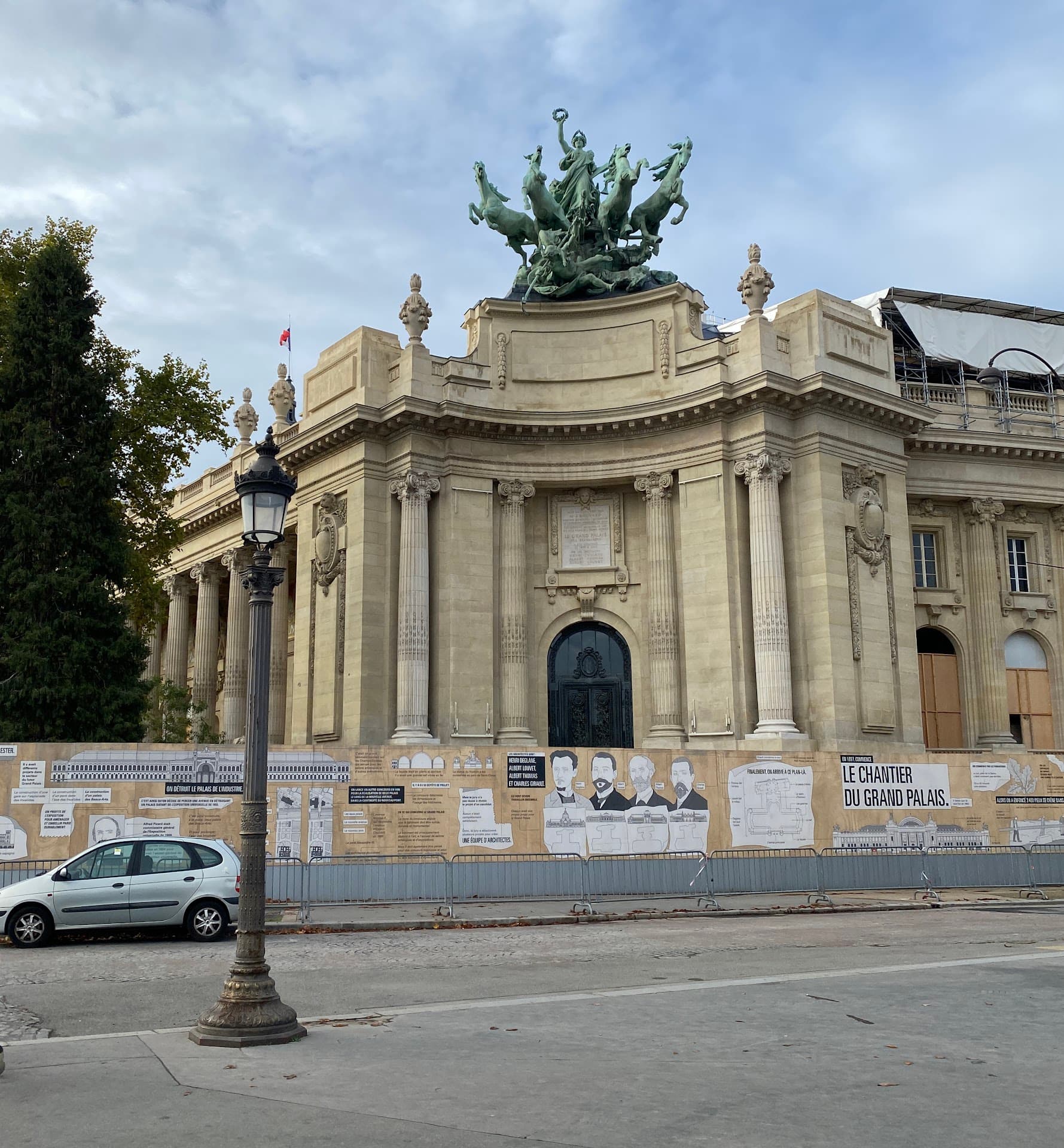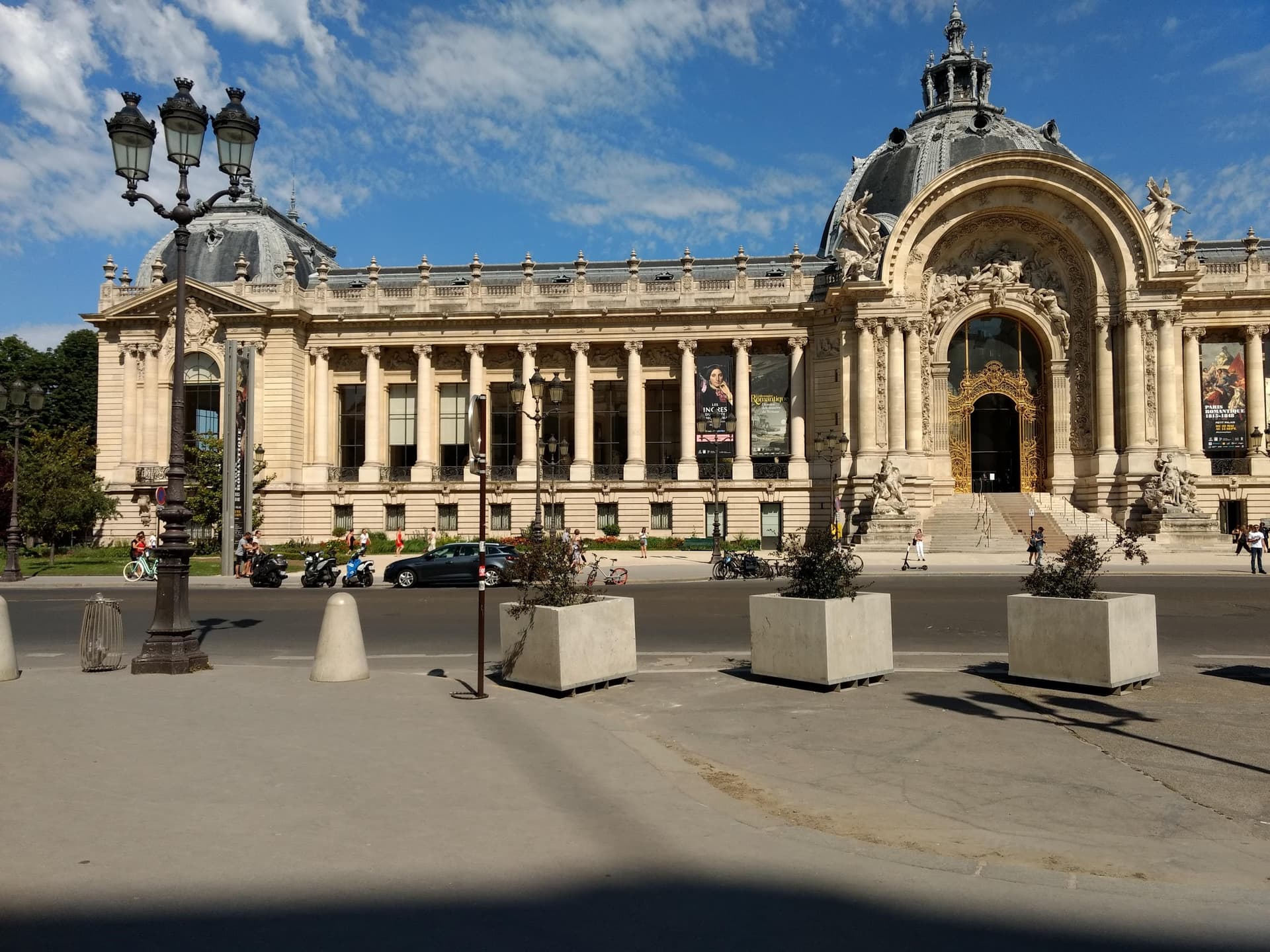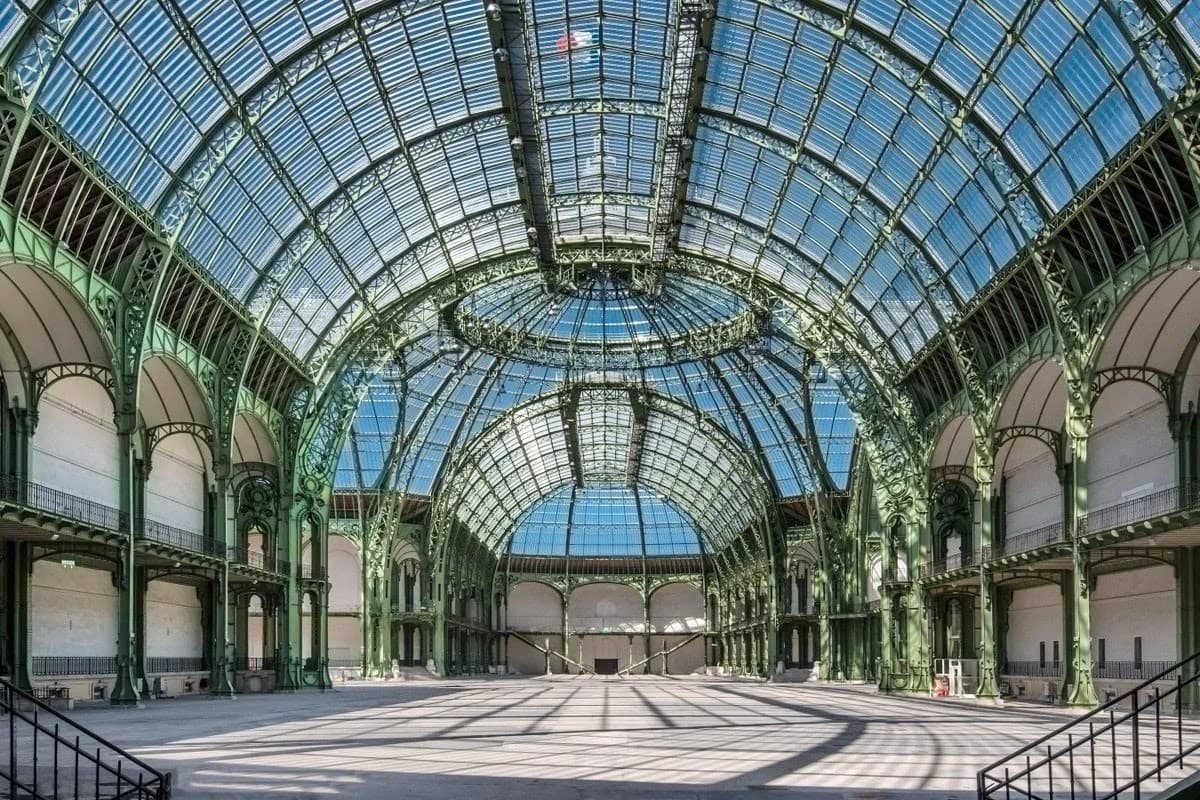Audio GuideGrand Palais
Art nouveau hall with domed glass roof, built in 1900, hosting exhibitions and cultural events.
The Grand Palais is a famous Parisian landmark that has transformed from its initial purpose during the Universal Exposition in nineteen hundred, into a vibrant centre for art, fashion, and cultural events. Originally constructed as an exhibition venue for the arts, it swiftly gained recognition with its magnificent iron and steel frame, topped by a vast glass dome and adorned with striking decorative elements. Its design combines the elegance of Beaux-Arts with the intricate details of Art Nouveau, showcasing ornate stone facades and elaborate ironwork that continue to captivate visitors today.
Over the years, the venue has fulfilled various roles. During the First World War, it was repurposed as a military hospital, and in the Second World War, it was used for propaganda and subsequently became a resistance headquarters during the Liberation of Paris. In recent times, there have been discussions on innovative ways to reimagine the space, but a commitment to preserving its historical charm has been maintained through meticulous restoration and modernisation efforts.
Today, the Grand Palais stands as a symbol of Parisian cultural heritage and contemporary innovation. It hosts a wide range of events, from art exhibitions and fashion shows to sporting events and concerts. It is also a renowned site along the Seine riverbanks, recognised as a World Heritage landmark.



